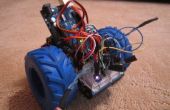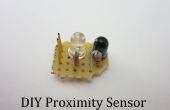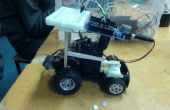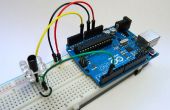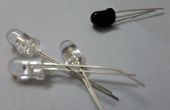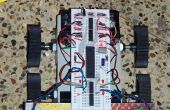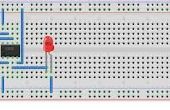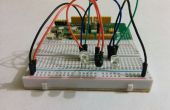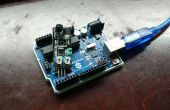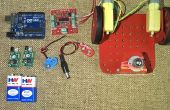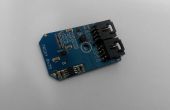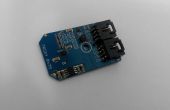Paso 5: Conectar el AVR (Arduino) y programar el chip
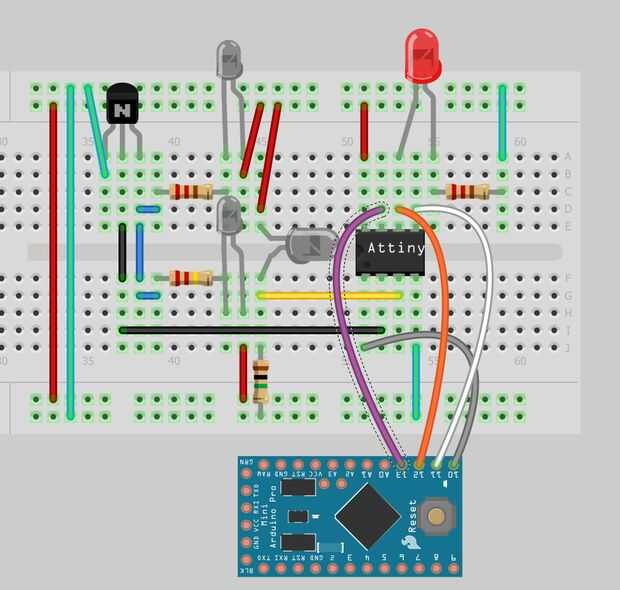
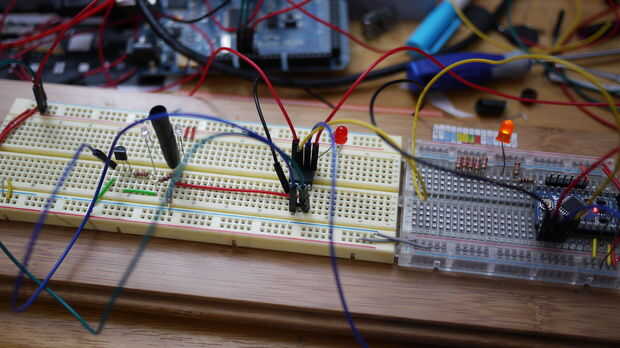
Instale el Attiny13 Core13 de sourceforge. Diy_bloke con direcciones e incluso un archivo zip para descargar aquí es un Instructable.
Aquí le damos las instrucciones del MIT para modificar su entorno para quemar Attiny.
Esta página podría ayudar si tienes problemas. Compruebe los comentarios.
Cable en el Arduino. Puede Imagínate lo cuando se realiza la programación.
Carga el archivo INO y grabar en el chip Attiny13.
Alternativamente use un programador AVR para quemar el archivo hexadecimal o nikkipugh autor Instructable tiene un diseño de escudo de tablero super tira para programar chips attiny13.
Puede que necesite un capacitor de 10uf o resistor de 120 ohmios de Arduino de reset a tierra.
Código:
/* Attiny13 proximity sensor by Dustin Andrews 2012 License: Creative Commons Unported http://creativecommons.org/licenses/by/3.0/ */ //Do some low level AVR pin writing to save instructions. 1010 of 1024. Close! #define SetPin(Bit) PORTB |= (1 << Bit) #define ClearPin(Bit) PORTB &= ~(1 << Bit) //wire your IR led to this pin. (chip pin 5?); #define irOutPin 3 //This pin goes high when the sensor detects and obstacle. (chip pin 6) #define outPin 1 // wire this pin to your phototrans vcc-->phototrans-->pin4-->1M res-->gnd(chip pin3) #define sensorInPin 2 void setup() { pinMode(irOutPin, OUTPUT); pinMode(outPin, OUTPUT); //pinMode(2, OUTPUT); analogReference(0);//analogread won't work on Atiny13 w/o this line. Won't work on others WITH it prob'ly. } void loop() { static long difference = 0; unsigned static long lastTime = 0; SetPin(irOutPin); delay1(); unsigned int r1 = analogRead(sensorInPin); ClearPin(irOutPin); delay1(); unsigned int r2 = analogRead(sensorInPin); difference += r1 - r2; if(millis() - lastTime > 5)//might get a smoother response with bigger delays { if(difference > 0) { SetPin(outPin); } else { ClearPin(outPin); } difference = 0; lastTime = millis(); } } void delay1() { //delay(1) is too costly in memory. Why is this so much cheaper? :D long start = millis(); while(true) { if(millis() - start > 1){break;} } }
